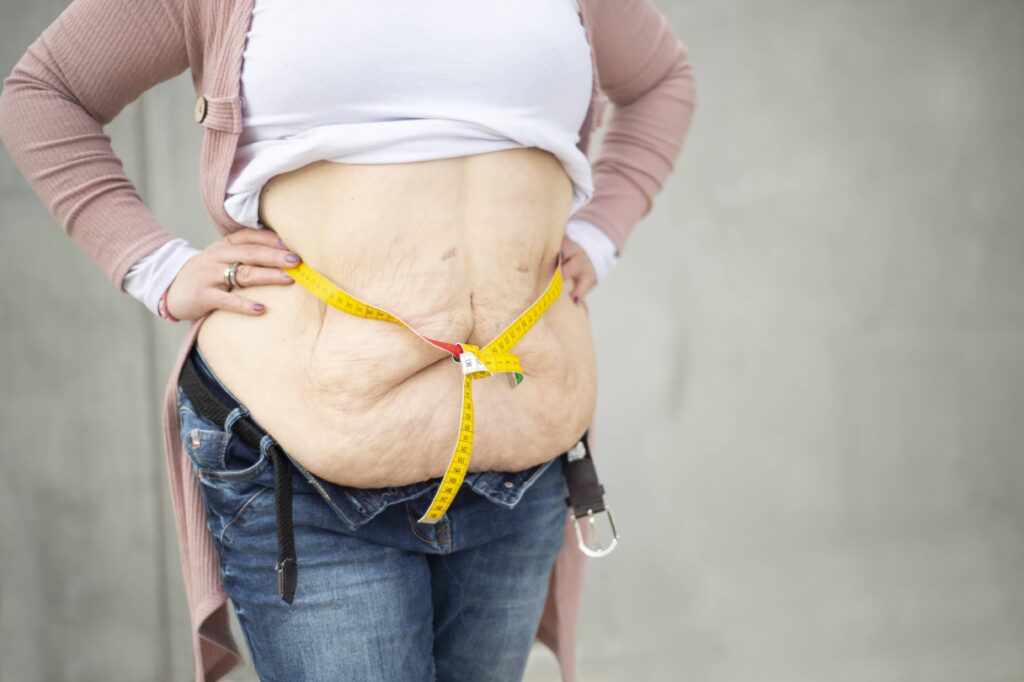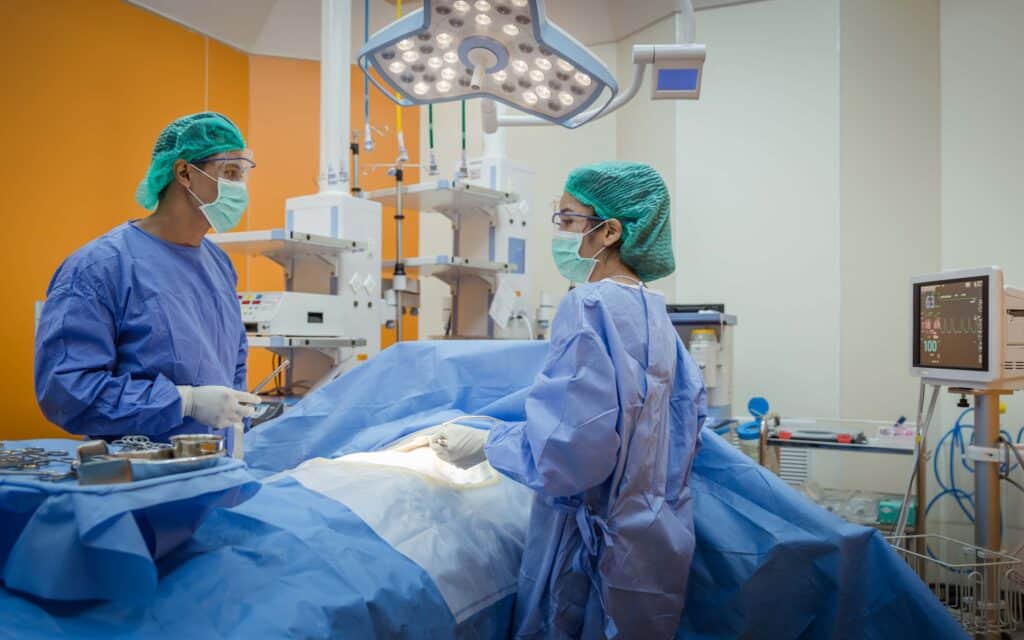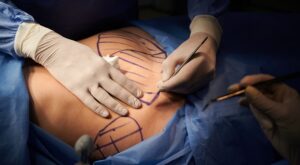Losing a significant amount of weight can be a goal for many people. Whether the weight loss is for health reasons or other reasons, it should feel like an accomplishment.
However, since this blog was originally published there have been several online articles describing the unhappiness people feel after losing huge amounts of weight. Why?
If the weight loss has been relatively quick, as can happen with gastric sleeve surgery or some diets, you may end up with an excess of sagging skin. Essentially, the skin’s elasticity can’t keep up with the weight loss. While exercise can help, most people find that excess skin doesn’t go away. If this is the case, you may want to consider a belt lipectomy procedure.
Another new addition to this blog is how the procedure is carried out. Dr Goldman only performs a belt lipectomy in a hospital under full general anaesthetic. The procedure can be done in a single stage or two stages, two weeks apart. Spacing out the surgery results in a much better and quicker overall recovery.
Now that you understand why people choose a belt lipectomy procedure, let’s discuss more about the procedure itself.
Is a belt lipectomy for me?
Unlike abdominoplasty or tummy tuck which eliminates fat from the stomach area, a belt lipectomy, also known as a lower body lift or circumferential body lift, will remove excess skin and fat from the entire lower torso/body.
As mentioned in the introduction, this procedure is perfect for those who have lost large amounts of weight and, as a result, have loose skin. However, that isn’t the only reason to get one. A belt lipectomy can also be done for cosmetic reasons, as it reshapes your body – making it a suitable solution after a pregnancy, for health reasons and to remove fat that isn’t responding to diet or exercise.
What exactly does a belt lipectomy involve?
The surgery generally starts with a patient resting on their stomach while excess skin/fat is removed from their back, hips, and buttocks. Following this, the patient is moved to rest on their back and their abdominal area is addressed.
This includes muscle tightening, if necessary (usually an on-the-table decision), creating a new belly button (necessary only in extreme cases), and securing the skin after removal. From there, a drain tube is installed, and the area is dressed and covered to protect it.
How quickly will I recover?
To assist with recovery, Dr Goldman carries out the procedure in two stages, over two weeks. After the surgery, soreness and limited mobility are to be expected. For the first week, your bandages will restrict you from showering. Most people find it takes them a few weeks to return to light activity, with most of the initial recovery time spent lying down – sitting up and walking may be done in small increments. Because of this, it is useful to have someone to help you out for an extended period of time after the surgery for day-to-day necessities.
For four to six weeks after the surgery, a compression garment, covering the stomach and back will need to be worn. For those who work, it’s advised that at least two weeks be taken off from work and then only go back to light work or a modified schedule. Plan for a follow up appointment 14 days after your surgery to remove the dressings, along with a six-week check, and three-monthly follow up to assess your progress and make sure there are no complications.
Can I get multiple procedures done in one go?
The tightening of your abdomen can be complemented by other reductions or lifts. A belt lipectomy is often combined with other procedures like a liposuction procedure or an arm, breast or facelift.
Patients often opt for this medical procedure to boost their weight loss goals, in an effort to target problem areas that store stubborn fats. Combined procedures – along with a healthy lifestyle – can accelerate visible weight loss results.
Is scarring likely to occur?
The surgery will most likely leave a circumferential scar on your stomach, hips and lower back. Lifestyle and health habits will determine how the scar heals, and the aftercare process can influence this significantly. Scarring, to some degree, is unavoidable. If you have undergone gastric sleeve surgery, the same incision area may be used, limiting the scarring to what is already there.
Most surgeons will attempt to limit the scarring to areas that can be covered, to minimise their visibility in public. It is also worth noting that scarring can take up to two years to fade and heal, or it can happen after the initial three-month healing period.
Preparing for the procedure
To get ready for the surgery, a thorough consultation with your surgeon is the best starting point. Here you will be provided with all the information for the surgery along with any considerations you need to take note of for yourself.
Ensure you choose a surgeon with experience to perform a belt lipectomy – and someone who you are comfortable with. These are the most essential elements of the entire surgery experience.
Ready to make a change? Schedule a consultation with Dr Goldman and see if a belt lipectomy is right for you? Get in touch now.
ABOUT THE AUTHOR
Dr Robert Goldman
Dr Goldman is a specialised fully qualified surgeon (AHPRA ID MED0000978565) (FRACS (ID 141033), MB,ChB, B.Sc (hons)) cosmetic surgeon with over 35 years of experience.
Advanced training at: Royal Perth Hospital WA, Sir Charles Gairdner Hospital & Fremantle Hospital WA
Fellow of the Royal Australasian College of Surgeons









